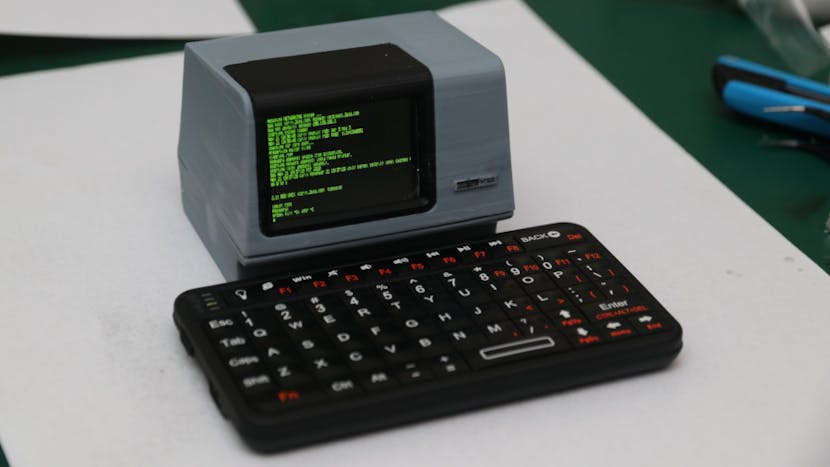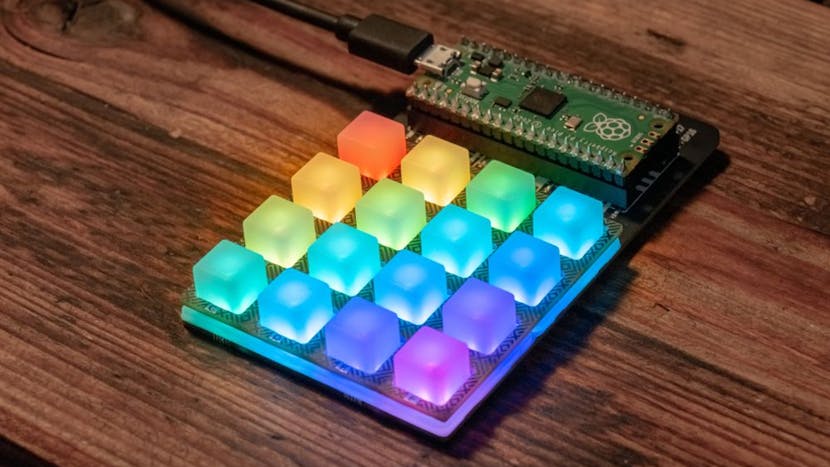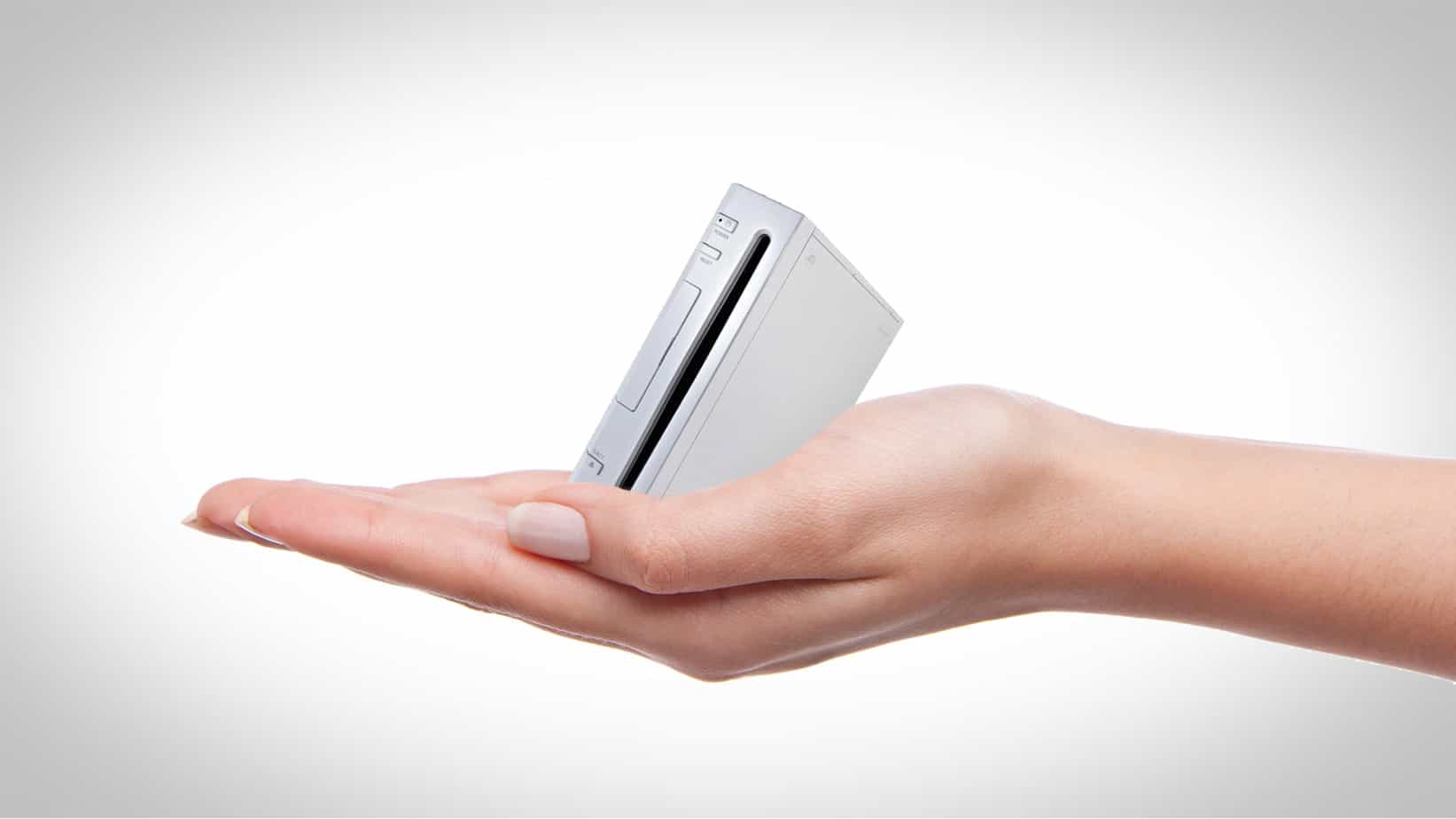Homemade Sega Saturn mini game console,セガサターンミニ,自制世嘉土星迷你 采用odroid UX4主板
Tiny 3D-Printed DEC VT-102 Hides a Fully-Functional, ESP32-Powered PDP-11 Minicomputer
A tiny screen and a 3D-printed chassis brings some of Digital’s fondest-remembered hardware up to date — and down in scale.
Jeroen “Sprite_tm” Domburg has been working on a build with a difference: It’s an ultra-compact replica of a Digital DEC VT-102 terminal, emulating a PDP-11 running 2.11BSD — all on the top of an Espressif ESP32 microcontroller.
“The thing that attracted me to the PDP11 is that the PDP line in general always has been a family of ‘hackers’ machines,'” Sprite_tm explains. “Its members were cheap enough to allow people to do fun stuff on, and for instance the first computer game, SpaceWar!, was written on a PDP1. It wouldn’t be the last game written on a PDP machine, though: Apart from the aforementioned arcade games, all the way in Russia on a cloned PDP-11, Russian software engineer Alexey Pajitnov wrote a certain title called ‘Tetris,’ which later was spread all over the world.”

Rock Pi X vs Raspberry Pi 4: x86 & ARM Showdown
Rock Pi X and Raspberry Pi 4 head-to-head, with both boards running Ubuntu 20.10 desktop. But which SBC has the best test performance?
The Legend of Zelda: Ocarina of Time Leak Reveals Cut Content and Never-Before-Seen Assets
A massive Legend of Zelda: Ocarina of Time leak has surfaced online revealing cut content and never-before-seen assets of the 1990’s Nintendo 64 game. Earlier today, a big upcoming Nintendo Switch game leaked, courtesy of GameFly. This new leak comes the way of a prototype Nintendo 64 cartridge of F-Zero X that contains data from an early build of Zelda 64 which is somehow only now seeing the light of day.

Pimoroni Launches a Wealth of Raspberry Pi Pico Pack, Base Add-Ons — and Teases a Wi-Fi Pack, Too
From compact displays to RGB LED keypads, and a handy ESP32-powered Wi-Fi adapter, Pimoroni’s gone heavy into the Pico ecosystem.

Wii Classic Mini Console Could Be Hitting Your Living Room In 2023
If hands-on, energetic gaming is your bag, then the arrival of the Wii Classic Mini Console will be something that you’ll already be eagerly anticipating.
The Wii was undoubtedly one of the most innovative consoles of our generation; that’s something that you can’t deny, whether you’re a Nintendo fan or not.
Taking a simple action that most people use every day like pointing a remote at a T.V and turning it into a gaming device was a complete gamechanger. What’s more, it was also the first step towards creating the joy-cons for the Nintendo Switch (a combination of the Wii’s ingenious playing style and the controller/screen hybrid from the not-so-portable Wii-U).

Making your own Segway, the Arduino way
After obtaining motors from a broken wheelchair, this father-son duo went to work turning them into a new “Segway.”
The DIY transporter is controlled by an Arduino Uno, along with a pair of motor drivers that handle the device’s high current needs. An MPU-6050 allows it to react as the rider leans forward and backwards, moving with the help of a PID loop. Steering is accomplished via a potentiometer, linked to a bent-pipe control stick using a bottle cap and glue.

Hands-On with the RP2040 and Pico, the First In-House Silicon and Microcontroller From Raspberry Pi
The RP2040, Raspberry Pi’s first in-house silicon, debuts on the Raspberry Pi Pico, its first microcontroller board — and it’s just $4.
The launch of the original Raspberry Pi in 2012 was the dawn of a new era of low-cost, easy-access single-board computers (SBCs). In the years since the Raspberry Pi family has grown both upwards, now on its fourth full generation, and outwards with a range of devices from the ultra-low-cost Raspberry Pi Zero family to the consumer-ready all-in-one Raspberry Pi 400.

SuperRT – Realtime raytracing on the SNES (short demo)
This is a short demonstration of a homebrew SNES expansion chip designed to add raytracing capabilities to the system. More technical details: https://youtu.be/2jee4tlakqo (video) https://www.shironekolabs.com/posts/s… (text)
James Bruton demonstrates the Coanda effect with an Arduino-controlled rig
The Coanda effect, as you may or may not know, is what causes flowing air to follow a convex surface. In his latest video, James Bruton shows how the concept can used as a sort of inverted ping pong ball waterfall or staircase.
His 3D-printed rig pushes balls up from one fan stage to another, employing curved ducts to guide the lightweight orbs on their journey.
The fan speeds are regulated with an Arduino Uno and motor driver, and the Arduino also dictates how fast a feeder mechanism inputs balls via a second driver module. While the setup doesn’t work every time, it’s still an interesting demonstration of this natural phenomenon, and could likely be perfected with a bit more tinkering.

